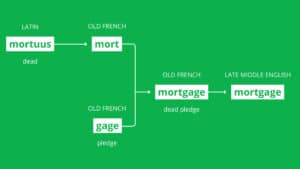A summary, how to make a submission, and an investor’s opinion
In March 2021, the NZ government announced plans to limit the deductibility of interest on residential investment property and the intention to extend the bright-line test. The discussion document’s (Design of the interest limitation rule and additional bright-line rules) purpose is to seek public feedback to assist in the government’s stated goal of implementing these changes as fairly and simply as possible.
I would like to encourage people to contribute to the consultation process, and so, have presented a summary of what the Government is trying to achieve and clear steps as to how you might go about making a submission yourself. As an investor, I finish this article with my own thoughts on the proposed finer details. The Government has stated several housing objectives with regards to the changes, these are to:
- ensure that every New Zealander has a safe, warm, dry, and affordable home to call their own – whether they are renters or owners
- support more sustainable house prices, including by dampening investor demand for existing housing stock, which would improve affordability for first-home buyers, and
- create a housing and urban land market that credibly responds to population growth and changing housing preferences, that is competitive and affordable for renters and homeowners, and is well-planned and well-regulated”
Policy and Regulatory Stewardship of Inland Revenue. (2021) Design of the interest limitation rule and additional bright-line rules. Wellington, NZ.
A summary of the facts – interest deductibility
The deduction of interest as an expense for residential property investors will be restricted from 1 October 2021. If you purchased a property on or after 27 March 2021 you will no longer be able to deduct interest as an expense from 1 October 2021. If you purchased an investment property before 27 March 2021 deductions will be gradually phased out as per the table below.
| Date interest incurred | Percent of interest you can claim |
| 1 April 2020 -31 March 2021 | 100% |
| 1 April 2021-31 March 2022 (transitional year) | 1 April 2021-30 September 2021 – 100% 1 October 2021-31 March 2022 – 75% |
| 1 April 2022-31 March 2023 | 75% |
| 1 April 2023-31 March 2024 | 50% |
| 1 April 2024-31 March 2025 | 25% |
| From 1 April 2025 onwards | 0% |
The Government has decided to make an exemption for “New-Build” residential property for the purposes of deducting interest as an expense, this is discussed below.
Interest deductibility – proposals
The proposed exclusions for other types of residential property include:
- Land outside New Zealand
- Employee accommodation
- Farmland
- Care facilities such as hospitals, convalescent homes, nursing homes, and hospices
- Commercial accommodation such as hotels, motels, and boarding houses
- Retirement villages and rest homes; and
- Main home – the interest limitation proposal would not apply to interest related to any income-earning use of an owner-occupier’s main home such as a flatting situation
- Certain student accommodation, serviced apartments, and Maori land are also considered
Policy and Regulatory Stewardship of Inland Revenue. (2021) Design of the interest limitation rule and additional bright-line rules. Wellington, NZ.
The Government has also proposed in the document that it will exempt Kainga Ora including its subsidiaries for the purposes of deducting interest as an expense.
A summary of the facts – Additional bright-line rule changes
The Government has extended the bright-line test to ten years. The bright-line test taxes gains from residential property acquired from 1 October 2015. The full breakdown is as per below.
- On or after 27 March 2021, a ten year bright-line period applies.
- Between 29 March 2018 and 26 March 2021, a 5 year bright-line period applies.
- Between 1 October 2015 and 28 March 2018, a 2 year bright-line period applies.
There are existing exemptions that generally apply to your main home, inherited property, or if you are an appointed executor or administrator of a deceased estate. These can be found on the IRD website.
As with interest deductibility, an exemption has been made for “New-Build” residential property, which will remain subject to the five year bright-line test.
Definition of “New Build”
In the discussion document there are three key categories of “New Build”, they are:
- Simple new builds
- Adding a dwelling to bare land
- Replacing an existing dwelling with one or more dwellings
- Complex new builds (Likely an apportionment rule will apply to both bright-line and interest deductibility)
- Adding a standalone dwelling
- Attaching a new dwelling to an existing dwelling
- Splitting an existing dwelling into multiple dwellings
- Commercial to residential conversions (e.g., office buildings that are converted into apartments)
A general rule for what constitutes a “New Build” will depend on if it receives its code compliance certificate (“CCC”) on or after 27 March 2021, with certain exemptions.
Transitional rule – Interest deduction will still apply if the “New Build” is acquired on or after the 27 March 2021 and the CCC was issued no earlier than 12 months prior to this date.
Definition of “New Build” – proposals
The Government has been relatively loose in its proposals for what constitutes a “New Build”. Proposals include:
- a dwelling is added to vacant land
- an additional dwelling is added to a property, whether stand-alone or
- attached
- a dwelling (or multiple dwellings) replaces an existing dwelling
- renovating an existing dwelling to create two or more dwellings.
- a dwelling converted from commercial premises such as an office block
- converted into apartments.
Policy and Regulatory Stewardship of Inland Revenue. (2021) Design of the interest limitation rule and additional bright-line rules. Wellington, NZ.
The Government is seeking consultation on whether the “New Build” exemption should apply to early owners of new builds only, or to subsequent purchases also.
A definition of an early owner includes:
- acquires a new build off the plans (before a CCC is issued for the new build);
- acquires an already constructed new build no later than 12 months after the new build’s CCC is issued;
- adds a new build to bare land;
- adds a complex new build to land; or
- completes a commercial-residential conversion.
Policy and Regulatory Stewardship of Inland Revenue. (2021) Design of the interest limitation rule and additional bright-line rules. Wellington, NZ.
A definition of a subsequent purchaser is one that acquires a new build more than 12 months after a CCC for the new build is issued.
Two key questions here are, how long the exemption will last for and whether investors can pass on that exemption. The Government has expressed interest in considering three options, they are:
- In perpetuity for early owners. The exemption would apply for the entire time an early owner retains their interest in the land.
- In perpetuity for early owners and a fixed period for subsequent purchasers. The period would start from the date a new build’s CCC is issued and would not reset when the land is sold. For example, if a 20-year exemption applies and the early owner sells after seven years, the exemption would apply to the subsequent purchaser for the remainder of the 20-year period (that is, 13 years). There would be no limit on the number of subsequent purchasers a property could have within the fixed period.
- For a fixed period for both early owners and subsequent purchasers. The period would start from the date a new build’s CCC is issued and would have a fixed time limit that applies to both early owners and subsequent purchasers, for example, 20 years. If an early owner acquires a new build off the plans, it is proposed that the exemption would apply to them from the date they acquire the property. The fixed period the exemption runs for would still be calculated from the date a CCC is issued for the new build.
Policy and Regulatory Stewardship of Inland Revenue. (2021) Design of the interest limitation rule and additional bright-line rules. Wellington, NZ.
The impacts of a “New Build” which is lived in by an owner occupier – continued investment rule
The Government has proposed that if a new build turned into an owner-occupied property at any point it would no longer retain its “New Build” exemption thereafter.
How to make a submission – Closing date 12 July 2021
It is important to note the Government is only seeking submissions on the options and proposals. They have made it very clear in the discussion document certain aspects of these new rules have already been decided.
If you wish to make a submission you should include a brief summary of your main points and any recommendations. Officials from the Inland Revenue may want to contact you to discuss the points you raise, so make sure you indicate this is something you are willing to do with contact details attached.
Submissions can be made via email to policy.webmaster@ird.govt.nz. Include “Design of the interest limitation rule and additional bright-line rules” in the subject line; or via post to below address:
Design of the interest limitation rule and additional bright-line tests
C/- Deputy Commissioner, Policy and Regulatory Stewardship
Inland Revenue Department
P O Box 2198
Wellington 6140
“Submissions may be the subject of a request under the Official Information Act 1982, which may result in their publication. The withholding of responses on the grounds of privacy, or for any other reason, will be determined in accordance with that Act. If you consider that any part of your submission should properly be withheld under the Act please clearly indicate this.”
Policy and Regulatory Stewardship of Inland Revenue. (2021) Design of the interest limitation rule and additional bright-line rules. Wellington, NZ.
An investor’s opinion: Simon McDonald.
In keeping with Labour’s goals to increase the supply of houses, the changes clearly favour property being developed and owners of new builds. Below are my opinions on the proposals that I believe are not in keeping with the stated goals nor in the best interest of the wider market.
Out of the three options with regards to the length of a “New Build” exemption and the passing on of that exemption, I agree with the “In perpetuity for early owners and a fixed period for subsequent purchasers” because I believe by not allowing perpetuity for long term investors does not provide confidence nor the correct incentive in working with the Government’s goal of adding to the housing supply. I also think that having at the very least a fixed period of 20 years for subsequent purchases allows for a degree of flexibility with regards to a change in circumstances of the early owner and this would allow for less market distortion with regards to the resale value of these properties.
I disagree with the continued investment rule because it does not fit the objectives of being easily administered and creates an adverse incentive, whereby an investor would be willing to pay more for a property that had not been owned by an owner-occupier.
These changes have meant I have less incentive to upgrade my existing property portfolio due to that portion of the debt not being able to be tax deductible. I am looking to sell existing property, once outside the bright line rule, to other entities with zero debt, sell down others, convert some to boarding houses and am leaning to a more development / new build investor mindset.
The personal view of Simon McDonald.
Referenced material “Design of the interest limitation rule and additional bright-line rules – A Government discussion document”. This document can be found here: http://taxpolicy.ird.govt.nz/publications/2021/2021-dd-interest-limitation-and-bright-line-rules













